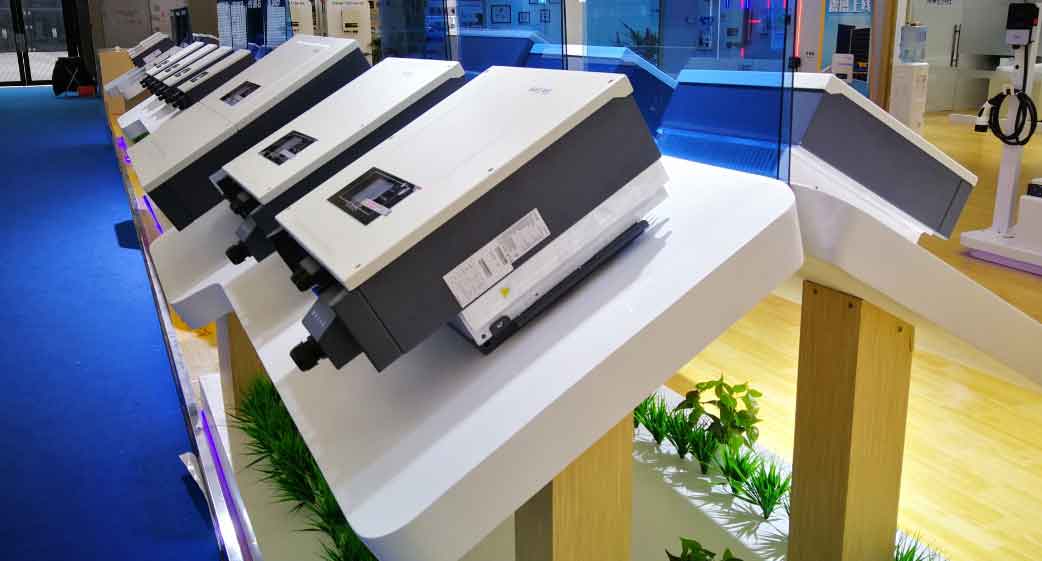Introduction
The global energy crisis and environmental challenges have intensified the demand for renewable energy systems. Among these, photovoltaic (PV) power generation has emerged as a pivotal technology due to its sustainability and scalability. Energy storage inverter, as critical components in PV systems, manage energy flow between solar panels, batteries, and grids. This paper focuses on the design and implementation of a 20kW high-voltage three-phase energy storage inverter that integrates multi-mode operation, advanced control strategies, and seamless grid-island switching. The study addresses hardware design, control algorithms, energy management, and grid synchronization to optimize efficiency, reliability, and adaptability.
System Architecture and Topology Analysis
The proposed energy storage inverter comprises four modules: PV input, battery interface, DC-AC conversion, and grid/load output. Each module employs specialized topologies to ensure efficient energy conversion and bidirectional power flow.
PV-Side Boost Circuit
The Boost converter elevates PV voltage to match the DC bus voltage. Its operation is governed by: [ V{\text{bus}} = \frac{V{\text{PV}}}{1 – D} ] where (D) is the duty cycle. A 1.4mH inductor and 1200V/75A IGBTs ensure stable operation under varying irradiance (200–1000V input range).
Battery-Side Buck-Boost Circuit
This bidirectional converter enables energy exchange between the battery (200–700V) and DC bus. In Buck mode: [ V{\text{Bat}} = D \cdot V{\text{bus}} ] In Boost mode: [ V{\text{bus}} = \frac{V{\text{Bat}}}{1 – D} ] A two-phase interleaved design reduces current ripple by 50%, achieving 97% efficiency.
Inverter-Side T-Type Three-Level Topology
The T-type three-level topology minimizes switching losses and harmonic distortion. Compared to NPC and ANPC structures (Table 1), it offers lower device count and balanced thermal distribution.
| Topology | Switch Count | Diode Count | Loss Distribution | Cost |
|---|---|---|---|---|
| NPC | 12 | 6 | Uneven | Medium |
| ANPC | 18 | 0 | Balanced | High |
| T-Type | 12 | 0 | Balanced | Low |

Hardware Design and Implementation
Power Circuit Design
- PV-Side Boost Converter: 1200V/75A IGBTs, 1.4mH inductor, and 10μF film capacitors.
- Battery Interface: Dual-phase interleaved Buck-Boost with 1.2mH inductors and 1200V MOSFETs.
- Inverter Stage: T-type three-level IGBT modules (IKQ75N120CH3 and FGH75T65SQD), LC filters (0.86mH inductors, 6.8μF capacitors).
Control and Protection Circuits
- MPPT Algorithm: Perturb and Observe (P&O) method achieves 99% tracking efficiency.
- Dual-Loop Control: Outer voltage loop and inner current loop ensure stability.
- Protection: Ground Fault Circuit Interrupter (GFCI) and Overcurrent Protection (OCP) circuits.
Key Performance Metrics
| Parameter | Value |
|---|---|
| PV Input Range | 200–1000V |
| Battery Voltage Range | 200–700V |
| Maximum Efficiency | 96.8% |
| THD (Grid/Island) | <3% / <5% |
Control Strategies
PV-Side MPPT
The P&O algorithm adjusts the Boost converter’s duty cycle to track the PV maximum power point (MPP). The flowchart in Figure 2 illustrates iterative voltage perturbation and power comparison.
Battery-Side Control
A dual-loop strategy regulates DC bus voltage ((V{\text{bus}})) and battery current ((I{\text{Bat}})):
- Voltage Loop: PI controller generates current reference.
- Current Loop: PR controller minimizes steady-state error.
Inverter-Side Control
- Grid-Connected Mode: Current-controlled to synchronize with grid voltage.
- Island Mode: Voltage-controlled to maintain 230V/50Hz output. The modulation strategy employs phase-disposed PWM for T-type inverters, reducing harmonic content.
Energy Management Strategies
The energy storage inverter supports ten operational modes (Table 2), enabling dynamic energy allocation.
| Mode | Description |
|---|---|
| Bat off-grid | Battery powers load |
| PV Bat on-grid | PV and battery feed grid |
| PV AC charge | PV and grid charge battery |
| Bypass | Grid directly powers load |
Energy conservation governs mode transitions: [ P{\text{PV}} + P{\text{Bat}} = P{\text{Load}} \quad \text{(Island Mode)} ] [ P{\text{PV}} + P{\text{Bat}} = P{\text{Load}} + P_{\text{Grid}} \quad \text{(Grid Mode)} ]
Seamless Grid-Island Transition
A hybrid control-hardware strategy ensures <8ms transition during grid faults:
- Grid→Island: GFCI detects grid loss, disconnects relays, and activates voltage control.
- Island→Grid: Synchronization controller matches phase/frequency before reclosing relays.
Transition times for critical modes:
| Mode Transition | Time (ms) |
|---|---|
| Bat on-grid → Island | 6.6 |
| PV AC charge → Island | 6.5 |
Conclusion and Future Directions
The 20kW energy storage inverter demonstrates high efficiency (96.8%), low THD (<3%), and robust multi-mode operation. Future work will explore SiC/GaN devices for higher power density and AI-driven energy management. This research advances the integration of renewable energy systems, offering a scalable solution for residential and industrial applications.
Keywords: Energy storage inverter, T-type three-level topology, dual-loop control, grid-island transition, MPPT.
